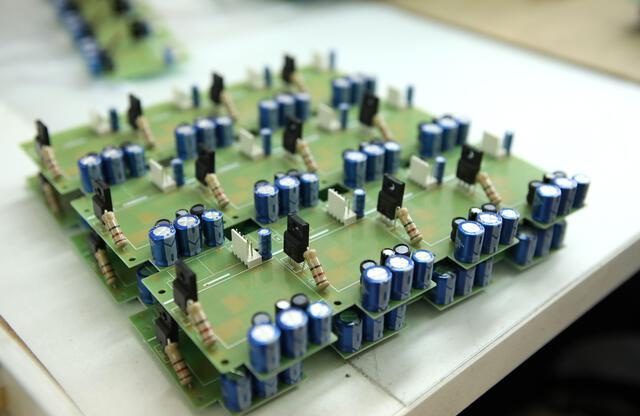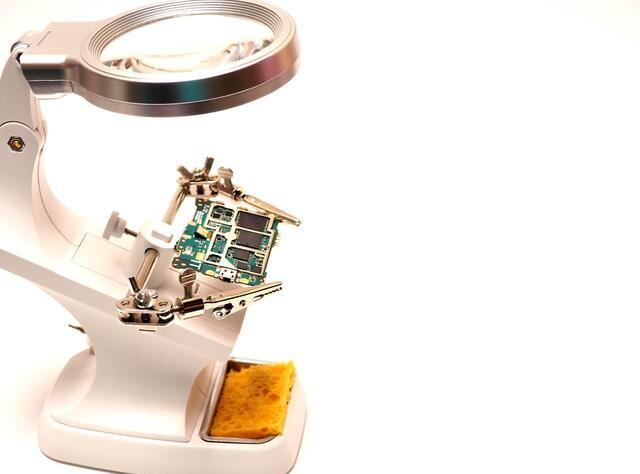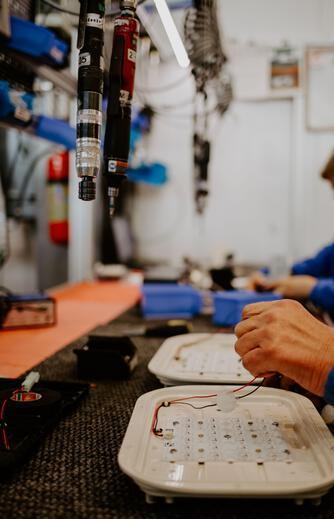Content Menu
● Introduction
● Factors Influencing Cost Per Placement
● Cost Breakdown of SMT Lines
● Dissecting the Components of SMT Assembly Pricing
● Optimizing Costs in SMT Assembly
>> Additional Strategies for Cost Reduction
● Conclusion
● FAQs
>> 1. What is the average cost per placement in an SMT line?
>> 2. How do machine configurations affect SMT costs?
>> 3. What role does labor play in SMT costs?
>> 4. Are there cost differences between single-sided and double-sided SMT assemblies?
>> 5. How can companies optimize SMT costs?
Introduction
Surface Mount Technology (SMT) lines are pivotal in modern electronics manufacturing, facilitating the precise and efficient assembly of electronic components onto printed circuit boards (PCBs). Understanding the cost per placement in an SMT line is essential for manufacturers aiming to optimize production processes and manage budgets effectively. This article delves into the various factors influencing SMT costs, providing a comprehensive breakdown and strategies for optimization.

Factors Influencing Cost Per Placement
The cost per placement in an SMT line is determined by several interrelated factors:
- Machine Costs: The price of pick-and-place machines can vary significantly, typically ranging from $30,000 to $200,000. High-end machines may have higher initial costs but can reduce the cost per placement through increased efficiency. Advanced machines often come equipped with features like vision systems, which enhance placement accuracy and speed.
- Labor: Labor costs fluctuate based on geographical location and the skill level of workers. For instance, regions with lower labor rates can provide more competitive pricing for assembly services. Additionally, skilled labor capable of operating complex machinery tends to command higher wages, affecting overall costs.
- Material Costs: The types and quantities of components used directly impact overall costs. SMT components are generally less expensive than their through-hole counterparts due to their smaller size and ease of handling. However, the prices of raw materials can vary significantly based on market conditions, supply chain issues, and component availability.
- Production Scale: Larger production runs benefit from economies of scale, significantly reducing the cost per unit. Conversely, smaller batches often incur higher per-unit costs due to inefficiencies associated with setup times and machine adjustments.
Cost Breakdown of SMT Lines
A detailed analysis of costs associated with SMT lines reveals both fixed and variable expenses:
- Fixed Costs: These include the purchase of machines, facility setup, and initial programming costs. Setting up a new SMT line can range from $200,000 to $800,000 depending on equipment choices. In addition to machinery, fixed costs may also encompass overhead expenses such as rent, utilities, and administrative salaries.
- Variable Costs: Consumables such as solder paste and flux contribute to ongoing expenses along with labor and utility costs. For example, annual material costs can range from $10,000 to $100,000 based on production volume. Other variable costs include maintenance supplies for machines and packaging materials for finished products.
- Regional Differences: Manufacturing in countries like China often results in lower overall costs due to cheaper labor and material availability. For instance, average assembly costs per SMT part can be as low as $0.235 in China compared to higher rates in North America or Europe.
Dissecting the Components of SMT Assembly Pricing
The cost of Surface Mount Technology (SMT) assembly is influenced by several factors:
- PCB Design Complexity: More complex designs with multiple layers or intricate routing require advanced machinery and skilled technicians, increasing costs. Designs that necessitate precise manufacturing and assembly will inherently be more expensive due to the additional resources required.
- Component Density: Higher component density leads to increased complexity in placement and soldering processes. More components mean more work in placement, soldering, and testing, which drives up expenses.
- Assembly Techniques: The choice between using solely SMT components versus a mix of SMT and through-hole components also affects cost. While SMT components are generally cheaper due to automated assembly processes, incorporating through-hole components can increase overall costs due to additional labor requirements.
- Testing Requirements: The need for extensive testing can also contribute significantly to costs. Automated optical inspection (AOI) systems are commonly used in SMT lines to ensure quality control but add to both initial investment and operational expenses.

Optimizing Costs in SMT Assembly
To maintain competitiveness while managing costs effectively, manufacturers can implement several strategies:
- Bulk Purchasing: Acquiring components in bulk can lead to significant savings on material costs. Establishing strong relationships with suppliers may also help negotiate better prices.
- Efficient Machine Utilization: Maximizing machine uptime and throughput is crucial for improving cost efficiency. Regular maintenance and timely repairs prevent costly downtimes that could disrupt production schedules.
- Balancing Quality and Cost: While reducing quality checks may lower costs initially, it is vital to maintain acceptable quality standards to avoid long-term repercussions. Implementing stringent quality control measures ensures that defects are minimized, which ultimately saves money in rework or scrap.
- Design for Manufacturability (DFM): Incorporating DFM principles during the design phase can significantly reduce assembly costs. This includes simplifying designs, minimizing the number of layers in PCBs, optimizing component placement for ease of assembly, and ensuring that components are easily accessible for soldering.
Additional Strategies for Cost Reduction
1. Optimize PCB Layout: Designing PCBs with minimal trace lengths reduces manufacturing time and errors. Grouping components logically based on their functions can also facilitate easier assembly.
2. Standardize Components: Utilizing standard-sized components simplifies the assembly process and reduces procurement challenges. This approach can lead to bulk discounts as well.
3. Limit Component Types: Reducing the variety of components used in a design minimizes inventory management complexities and streamlines the assembly process.
4. Plan for Testing Early: Designing PCBs with test points accessible from one side reduces complexity during testing phases. This foresight can save time during assembly and testing stages.
5. Leverage Automation: Employing automated inspection systems during production enhances quality control while reducing human error. Automation not only improves efficiency but also lowers long-term labor costs associated with manual inspections.
6. Implement Lean Manufacturing Principles: Adopting lean manufacturing techniques can help identify wasteful practices within the production process. Streamlining workflows by eliminating unnecessary steps contributes to lower operational costs.
7. Invest in Training Programs: Continuous training programs for employees ensure that they remain skilled in operating advanced machinery efficiently while adhering to quality standards.
8. Utilize Simulation Software: Advanced simulation tools allow manufacturers to model their production processes before implementation. This enables them to identify potential bottlenecks or inefficiencies that could lead to increased costs.
Conclusion
Understanding the cost per placement in an SMT line is crucial for electronics manufacturers seeking to enhance their competitiveness. By analyzing key factors such as machine costs, labor expenses, component density, production scale—and adopting effective cost-optimization strategies—companies can achieve a balance between quality and affordability. As the electronics industry continues to evolve with advancements in technology and changing market demands, staying informed about these dynamics will be essential for maintaining operational efficiency and profitability.

FAQs
1. What is the average cost per placement in an SMT line?
The average cost varies widely depending on factors like region and production scale but typically ranges from $0.003 to $0.235 per placement.
2. How do machine configurations affect SMT costs?
Higher-end machines with advanced features may incur higher initial costs but can lower per-placement costs due to improved efficiency.
3. What role does labor play in SMT costs?
Labor costs differ by region and skill level, significantly impacting overall expenses associated with SMT assembly.
4. Are there cost differences between single-sided and double-sided SMT assemblies?
Yes, double-sided assemblies generally incur higher costs due to additional processes required for component placement on both sides of the PCB.
5. How can companies optimize SMT costs?
Strategies include bulk purchasing of components, maximizing machine utilization, employing DFM principles during design phases, leveraging automation for quality control, implementing lean manufacturing practices, investing in training programs for staff, optimizing PCB layouts for efficiency, limiting component types used in designs, planning testing early during design phases, and utilizing simulation software for process improvements.




















